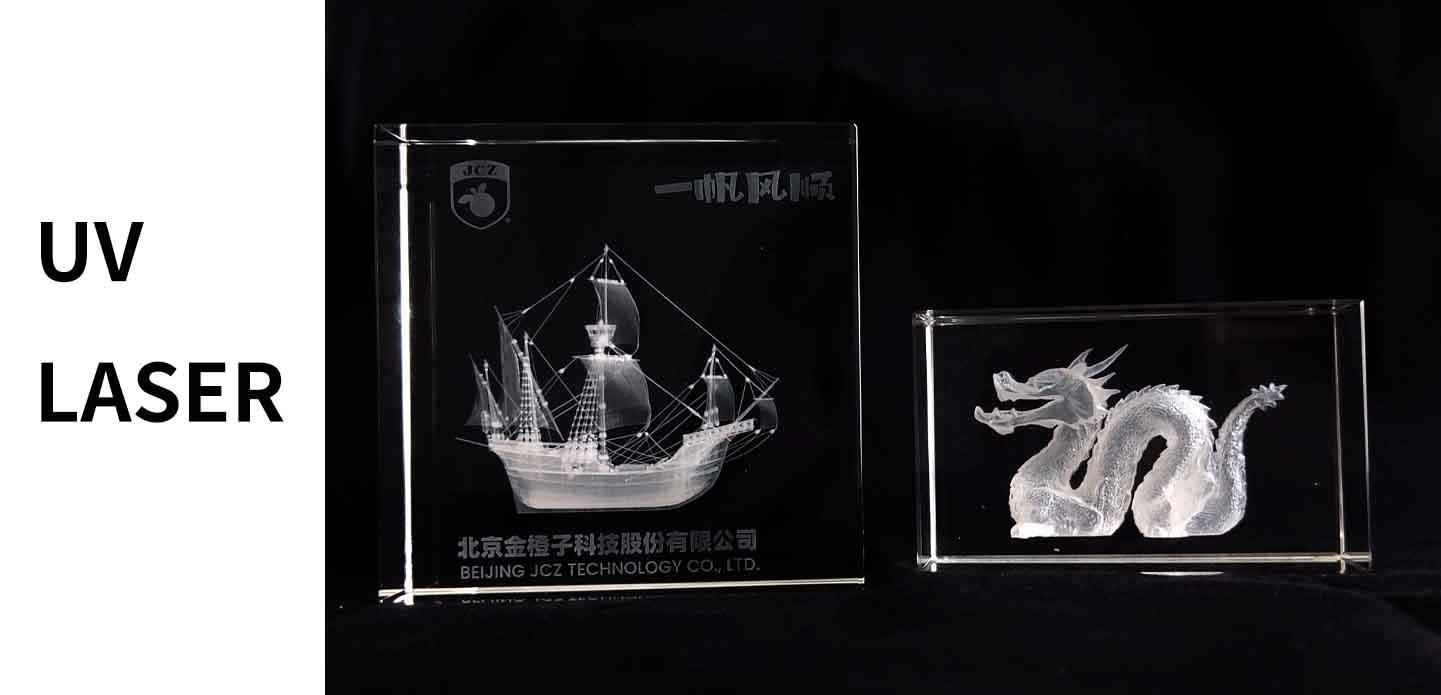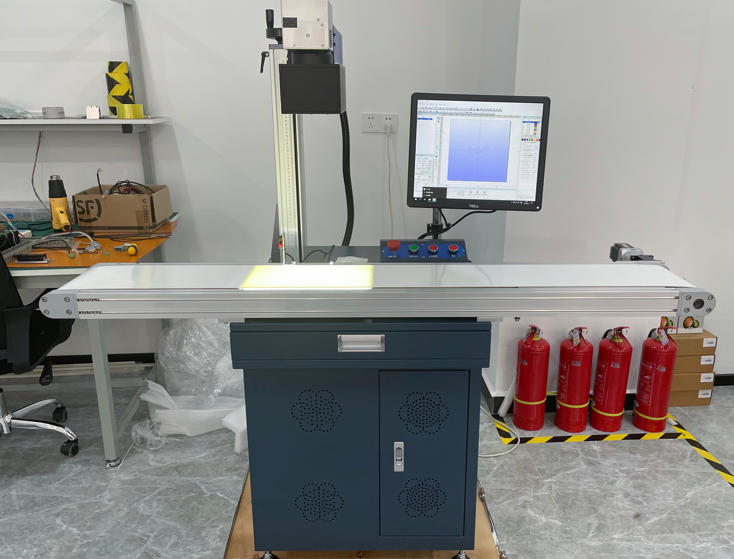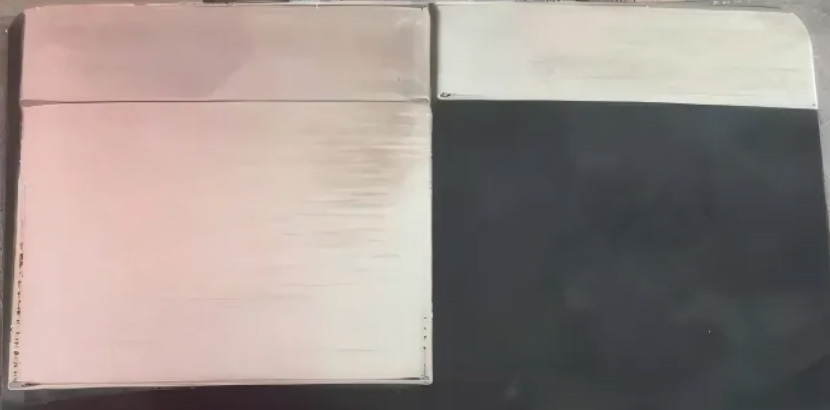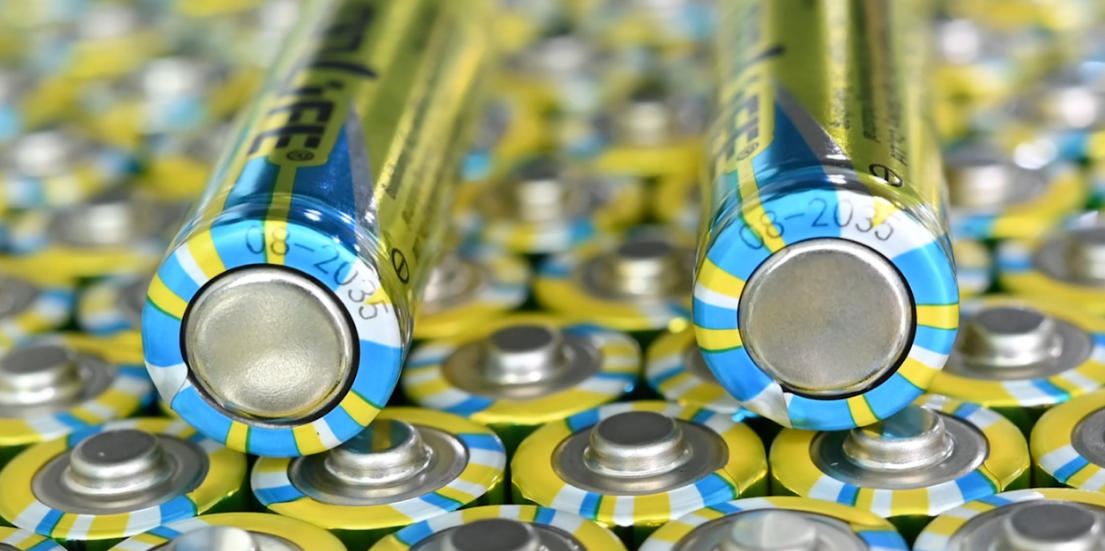
Precision Marking, Controlled to Perfection | Multi-Material Compatibility | Reliable & Clean Processing
Overview
Ultraviolet (UV) laser is an invisible light source characterized by a small beam spot, short pulse width, high peak power, and fast marking speed. By directing a high-energy UV laser onto a localized area of the workpiece, it causes the surface material to undergo a photochemical reaction—such as vaporization or color change—without significant heat effect. This process leaves a permanent, high-contrast mark that is both durable and precise.
01. Working Principle
The UV laser marking machine operates using a high-energy, short-wavelength ultraviolet beam (typically 355 nm). Unlike infrared or fiber lasers that rely on thermal ablation, UV lasers perform “cold processing”. The photons in UV light carry extremely high energy, which can directly break molecular bonds on the material surface. This photochemical reaction results in fine material removal or localized color change without melting or burning the substrate.
A computer-controlled galvanometer scanning system precisely directs the laser beam across the target area, enabling ultra-fine, high-speed marking. This “photo-etching” effect produces crisp, micron-level markings that meet the stringent requirements of modern precision industries.
02. Core Advantages
UV laser marking machines stand out for their non-thermal cold processing capability. The 355 nm wavelength interacts with materials through photochemical effects, generating almost zero heat-affected zones (HAZ). This ensures that even heat-sensitive materials—such as plastics, silicon wafers, and coated metals—remain undamaged and deformation-free.
Key benefits include:
Ultra-fine marking precision down to a few microns, ideal for microelectronics and semiconductor industries.
High stability and minimal maintenance, ensuring long-term reliability in continuous production environments.
Wide material compatibility, suitable for metals, plastics, glass, ceramics, and flexible films.
No consumables required, offering a clean, eco-friendly, and cost-effective marking solution.
Compared to traditional CO₂ or fiber laser marking systems, UV lasers fill the gap for applications demanding extreme detail, minimal heat, and absolute precision, making them indispensable in precision manufacturing and advanced packaging sectors.
03. Application Scenarios
1. Medical Device Industry
UV laser marking technology eliminates the risk of heat damage and particle contamination, aligning perfectly with the sterility and precision standards of medical equipment manufacturing.
Permanent device traceability codes and serial numbers can withstand over 1000 alcohol wipe cycles without fading.
Syringe scales, surgical instrument labels, and catheter markings achieve 10 μm-level accuracy, directly supporting patient safety and regulatory compliance.
2. Semiconductor Industry
The short wavelength of UV lasers provides unmatched performance in microfabrication of semiconductor materials.
On 300 mm silicon wafers, UV marking ensures clear traceability codes without surface micro-cracking.
For flexible PCBs and IC chips, 355 nm laser beams achieve 5 μm precision with a <50 μm heat-affected zone, preventing delamination and preserving electrical stability.
This makes UV laser marking essential for maintaining chip yield and long-term circuit reliability in high-end electronics.
3. Automotive Manufacturing
In the automotive sector, UV laser marking is widely applied to metal and polymer components such as body panels, wheels, and interior trims.
High precision, low deformation, and fast marking speed improve component consistency and production efficiency.
Laser marking enhances traceability, anti-counterfeiting, and process automation—while eliminating the need for chemical etching or ink printing.
Its non-contact marking method ensures excellent durability, even in high-vibration or high-temperature environments.
04. Expanding Horizons: Toward Smart and Green Manufacturing
As the manufacturing industry advances toward digitalization and sustainability, UV laser marking plays a crucial role in enabling clean, intelligent, and automated production lines.
When integrated with vision inspection, IoT, and AI-based quality control systems, UV laser marking machines can:
Perform real-time quality monitoring
Support automated traceability data collection
Contribute to zero-emission, eco-friendly production
In precision manufacturing, where every micron matters, the UV laser marking machine has become the tool of choice for achieving accuracy, reliability, and environmental responsibility in one solution.
Conclusion
From medical instruments to microchips and automotive components, UV laser marking stands at the forefront of next-generation manufacturing. Its cold marking process, ultra-fine precision, and wide material compatibility make it the perfect solution for industries that demand excellence in both detail and durability.







